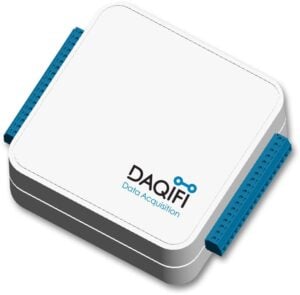
Field Data Acquisition presents significant challenges for engineers, but in recent years a new generation of DAQ devices have come onto the market that aim to take the hassle out of the process.
These devices are typically able to run under their own power for significant periods and in surprisingly difficult environments. They are lightweight and compact, meaning that they can be incorporated into many systems with little hassle. They are also able to upload data to a central repository via wireless networks, which makes the collection of previously inaccessible data possible.
Our products offer the latest in field data acquisition. To find out more refer to our product page.
The Challenges of Field Data Acquisition
There are several challenges to be overcome when trying to collect data in the field. First and foremost, one problem is that whilst the system under study might be a large, rugged, mechanical piece of machinery, data acquisition systems are notoriously fragile.
This can be a problem if the system you are collecting data on produces, or works within, a hazardous environment. In days past, it was often the case that every piece of machinery had its own dedicated data acquisition system, and was hard-wired to a dedicated computer terminal. At best, this meant the expense of running delicate cables far enough away from the machinery to keep the engineer safe. At worst, it meant that data acquisition was only performed during shut downs.
Another challenge of field data acquisition is that in many cases the system under study is inherently mobile, such as a vehicle. Since, as already pointed out, most legacy DAQ systems required hard links, these systems were essentially unable to access data from mobile machinery.
The Solutions
Much time and thought has been expended in trying to overcome these challenges, and the new DAQ systems coming onto the market go a long way to overcoming them. Modern DAQ systems are increasingly based on mobile DAQ devices, which are inherently portable in themselves.

These devices achieve this portability in several ways. Primarily, instead of requiring a hard link they are able to collect data from a variety of sensors, aggregate this, and then upload it to a central repository via commonly used wireless networks. Some of these devices even have the ability to produce their own Wi-Fi signal, making connecting to them in the field very straightforward.
They are also admirably light and compact. This means that even in machinery where internal space is at a premium, or in performance contexts where extra weight would be a hindrance, they can be incorporated into the system under study with a minimum of effort or performance loss.
Being able to incorporate a data logger into the design of machinery, and fetching data from it wirelessly, also means that time is saved that would be otherwise spent disassembling systems in order to download the data collected.
Lastly, these portable devices come equipped with an on-board suite of software that means they are able to do quite complex data manipulation by themselves, dispensing with the need for a dedicated workstation whilst in the field.

